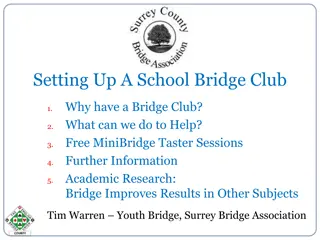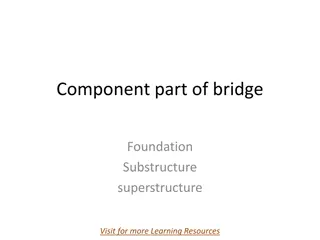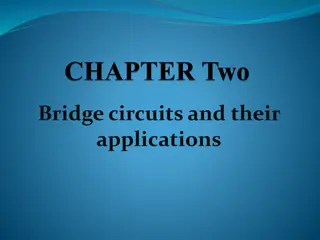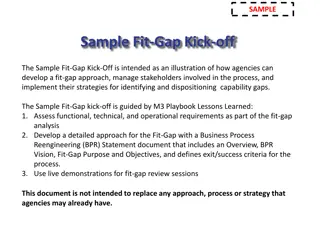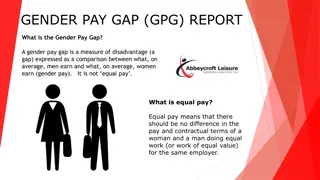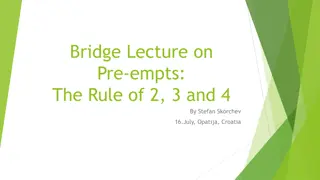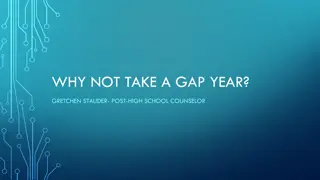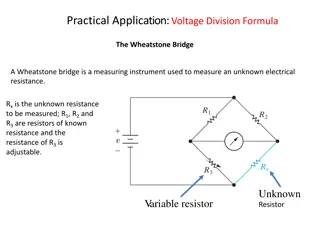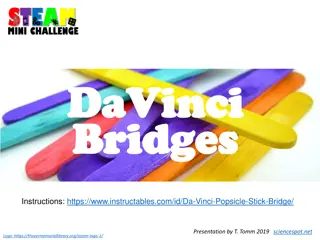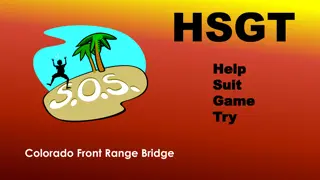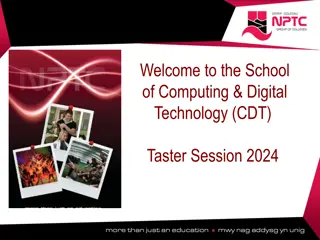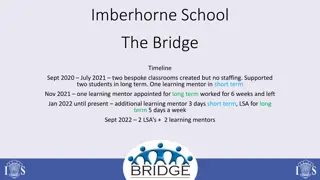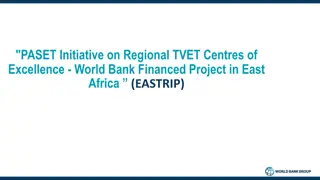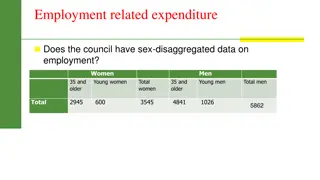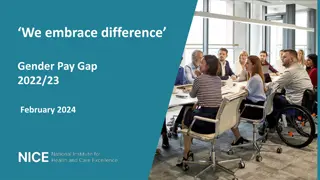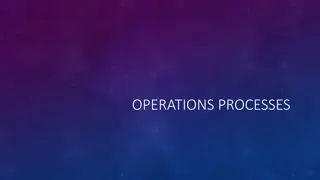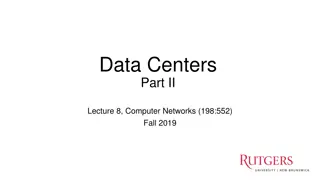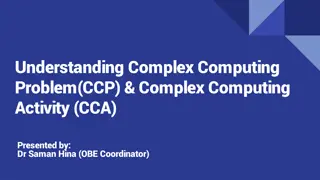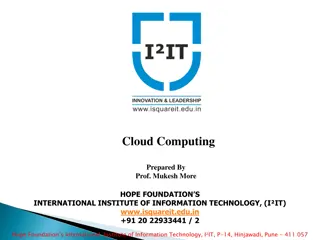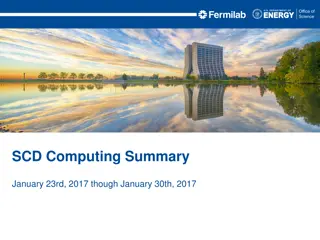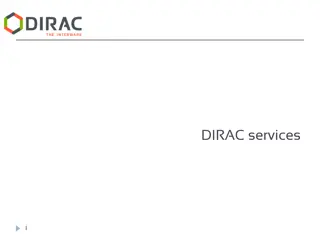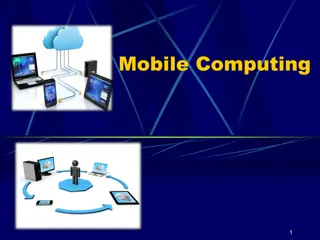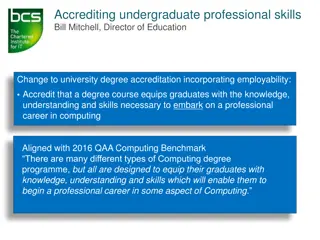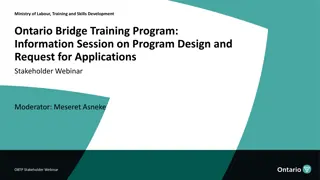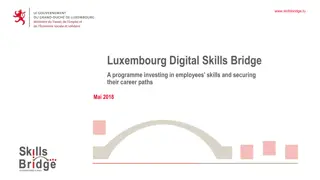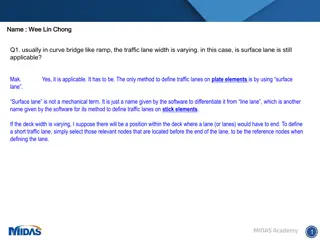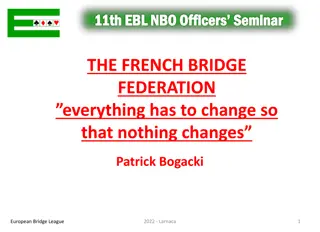Transforming School Computing to Bridge the Skills Gap
Addressing the skills mismatch between education and the workforce through innovative approaches like Challenge-Based Learning and Collaborating to Create (C2C). The focus is on real-world projects, virtual internships, and developing complex competencies vital for the future. The research aims to evaluate and implement a scalable model enhancing school computing education.
Download Presentation

Please find below an Image/Link to download the presentation.
The content on the website is provided AS IS for your information and personal use only. It may not be sold, licensed, or shared on other websites without obtaining consent from the author. Download presentation by click this link. If you encounter any issues during the download, it is possible that the publisher has removed the file from their server.
E N D
Presentation Transcript
Enabling School Computing to respond to a skills mismatch between Education and the World of Work Alison Twiner, Jo Shillingford, Louis Major and Rupert Wegerif
Linking schools & enterprise Educating for the future ( future skills ) through real-world projects and authentic links with real world of work contexts Virtual team role-play Virtual Internships Complex competencies : communication, collaboration & teamwork creativity & design complex problem solving Our design-based-research will: evaluate this new model develop tried & tested educational design principles develop a plan for a scalable, sustainable platform
Cumulative cost & effort 2) Identifying & Resolving Risks 1) Planning & Preparation Progress Analysis of situation: a) existing theory b) requirements Review Initial Design Revised Design Operational Design Implications for theory 4) Evaluation 3) Implementation Final practical & theoretical products Based on: Boehm, B. (1988). A spiral model of software development and enhancement. Computer, 21(5), 61-72.
3) Authentic (curricula) link to the WoW 1) Challenge- Based Learning 2) Collaborating to Create (C2C) = Virtual Internships Phase One: Pedagogy & classroom application Phase Two: Considering lessons, then developing a scalable platform
What is Challenge-Based Learning? Focus on: Real-world problem A challenge that s important to students o Computing foci: digital divides and connectivity Meaningful use of technology Teamwork What VIP adds to this: Support for teamworking: C2C Authentic link to the world of work
Collaborating2Create (C2C) Education Schools & curricula School experiences & context Collaborating2Create (C2C) Group working Dialogue Problem-solving Creating products or solutions Being creative World of work Authentic workplace experiences Educating for the future / future skills
Linking authentically to the world of work Authentic real-world challenges that are relevant to the Computing curriculum, around connectivity and digital divides Video & audio (as a hook , illustration of workplace practices) Thinking global, acting local = students are experts Collaborating2Create = skills & competencies for the future CSI Assessment Criteria
Where were at now Phase 1, Iteration 1 complete in lead research schools Computing: seven Year 8 classes in two schools; five teachers; 200+ students. Data includes nine lesson observations; three student focus groups; 58 surveys with students.
Voices from the classroom: Computing Teacher and Careers Leader perspective Why I decided to take part World of Work Group work and ground rules Challenge Overcoming barriers Gender difference who doesn t love Computing! Positivity all around
C2C in the Computing class Developing Jaz Enterprises and The Jaz One 22.02 L: Yes! I m a genius! 18.30: [Designing the prototype (L); using Scratch to demonstrate the interface (R)] L [suggesting text to programme in]: What time is Bingo tomorrow? 23.10 L: There we go, there s our phone. It s beautiful! Personally, I think that looks cool! 22.15 R [liking the suggestion]: Bingo!
29.15 L: R are you finished? R: Let me save. I m pretty much done. Do you want to test it? L: Right can I play? [L and R swap seats] 28.11 L: The Jaz phone TM R: Put The Jaz Phone . That s our name Jaz Enterprises! L: Jaz One! 30.13 L [reads]: Bob has gone shopping! Jim is not available right now! R: I must have not put in 30.53 L: [typing] Cheers Geoff Oh you write back? [reading] Are you free on Saturday? There is a coffee morning on [typing] Yes [hits enter] Hey it works! [reading] Are you free to meet up sometime? [typing] Ew, get away from me you creep! 31.51 L: Right, mail was the last one [types something in] R [returning to seat]: I need to fix that
Summary of analysis Shared ownership and affirming group identity Individual work is combined, feeding in to each other s tasks, to create a collaborative idea and product solution Presenting to the class, 6 weeks later: Our goal is to redesign the electronic industry and make it accessible to anyone. We plan to start this with our brand new Jaz phone
Retrospective pre-post survey data How I felt before starting my Virtual Internship (in September) How I feel now having completed my Virtual Internship 1 2 3 4 5 I know some of the skills people need in the workplace I think I have some of the skills I will need in the workplace 1 2 3 4 5 1 2 3 4 5 1 2 3 4 5
Mean score (pre) Mean score (post) 3.96 2.93 What I learn and do in Computing will be important for me in the future 3.6 3.86 I know some of the skills people need in the workplace 3.60 4.23 I can reflect on what I ve done well, and think about how I can improve my work 3.23 3.95 I think I have some of the skills I will need in the workplace 2.86 3.51 I think group work is important 3.18 3.81 I feel confident to present my ideas to others 2.93 3.82 I can think about problems in different ways 2.74 3.68 I enjoy working in a group
Next steps Building on early successes from Phase 1: Iteration 1 Optimising the Virtual intentions of the project Developing a scalable model, through understanding of what works and why Managing the balance between scope for flexibility and localisation, and need for structure and scaffolding
Contacts Alison Twiner: ajt213@cam.ac.uk Jo Shillingford: JShillingford@chellaston.derby.sch.uk Louis Major: lcm54@cam.ac.uk Rupert Wegerif: rw583@cam.ac.uk https://www.educ.cam.ac.uk/research/projects/vip/




